Buying a hybrid is beginning to make economic sense again – because the price of gas is going up again. Which can make up for the higher buy-in price of the hybrid.
And maybe more so.
How much you save – or not – ultimately depends on how high the price of gas goes. Right now, it’s looking like it’ll be at least $3 by Memorial Day and already is higher than that in some parts of the country.
Which makes paying a little more initially for a hybrid something that could well be worth the expense – especially given what you might be having to pay at the pump by Labor Day.
What It Is
The NX300h is the hybrid version of the Lexus NX, which is a compact-sized/two-row luxury crossover very similar in appearance and layout to the better-known and mid-sized Lexus RX (which is also available in hybrid configuration).
It’s meant to appeal to people who like the looks and layout of the RX but would like a bit less RX – in terms of size and price.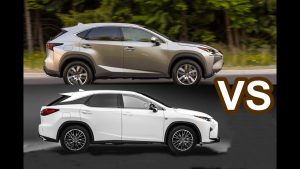
The NX300h stickers for $40,160 to start – vs. $47,820 for a third more of a similar thing in an RX-sized package.
A top-of-the-line NX300h F Sport Black Line trim lists for $46,910 – still less than the price of the base trim hybrid RX.
The price of the hybrid NX is also not much higher than the price of the otherwise-equivalent non-hybrid NX300, which starts at $37,610 without all-wheel-drive, which is optional.
It is standard in all NX300h trims.
Equipped with the optional AWD system, the non-hybrid NX300 stickers for $39,010. This is only $1,150 less than the hybrid/AWD-equipped NX, which is also capable of going 11 miles farther on a gallon of gas in city driving and 2 miles farther on the highway.
Given how high gas prices have risen already, that $1,150 difference in the price you pay for the NX hybrid vs. the regular NX might end up saving you considerably more – at the pump – over the life of the car.
You might also make some up of what you spent up front come trade-in time – when a hybrid that costs less to drive could be worth more than the same thing without the hybrid drivetrain that costs more to drive.
What’s New
The Black Line trim is new – and unique to the NX300 hybrid. It includes leather sport seats with contrast blue stitching that’s not offered in the non-hybrid NX – plus a heated steering wheel and heated and cooled driver and front passenger seats and a firmer-riding suspension.
What’s Good
A lot like the RX for a lot less than the RX.
You can’t control gas prices – but you can control how much gas you use.
Redundant manual controls for important functions such as the climate control and stereo – which still comes with a CD player, too.
What’s Not So Good
Mileage advantage is almost entirely in city driving situations.
Not as speedy as the RX.
Trackpad interface is hard to use accurately when the NX is moving.
Like other hybrids, the NX300h can be more accurately described as a part-time electric car.
It has a gas-burning engine that powers the drive wheels, like any other car. In this case, a 2.5 liter four cylinder engine. But like an electric car, it also has a high-voltage (NiMH) battery pack that feeds volts to electric motors that can also power the drive wheels – as well as accessories like the air conditioning, which continues to work even when the gas engine is off.
The advantage to this combo layout is an electric car without the disadvantages of an electric car.
You don’t have to worry about how far it can go before it runs out of range – or how long you will have to wait to recharge.
It recharges itself, as you drive. And it uses less gas (and emits fewer gasses, if you are into that) during the drive because the gas engine is often off.
It also costs much less than an entirely electric car, saving money on the car and on gas.
How much you could save depends greatly on where you drive – and that will help decide whether what you spend on the car is worth the additional expense.
The hybrid NX is capable of delivering 33 MPG in city driving – which is in the same ballpark as many compact economy cars and a very impressive 11 MPG higher than the non—hybrid NX300 delivers. It does this trick by frequently cycling the gas engine off when the NX is stationary or not moving faster than about 25 MPH, as in stop-and-go driving. Also, the hybrid’s 2.5 liter engine isn’t as powerful as the non-hybrid’s smaller but turbocharged 2.0 liter – and 235 horsepower – engine, vs. the hybrid NX’s combined (gas engine and electric motor/battery) 194 hp.
It uses less gas for that reason, too.
Regardless, an 11 MPG difference is a pretty big difference.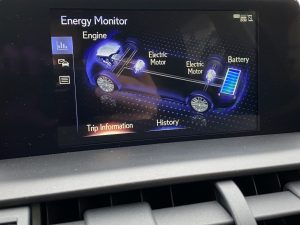
It means the hybrid NX can travel almost 500 miles on 15 gallons in city driving while the non-hybrid NX can only go about 330 miles on the same amount of gas – assuming the same stop-and-go/lower speed city driving conditions.
That’s a difference of 170 miles per tankful in favor of the hybrid, which works out to a savings of about $12 per tankful in gasoline (at current prices) you didn’t burn – or have to buy – to travel the almost 500 miles vs. traveling the same distance in the non-hybrid.
If you fill up once a week, that’s a potential savings of about $48 per month or $576 annually. In about two years of driving, you’d make up in gas savings what you spent to buy the hybrid NX vs. it’s otherwise-equivalent non-hybrid/AWD equivalent. Over the course of five years, you’d have saved more than you spent – even if the price of gas doesn’t go much higher than the current (as of mid-March,when this review was written) $2.80 or so it costs right now. 
And if the price of gas should hit $4 or $5 per gallon . . .
On the downside, the NX hybrid’s mileage advantage slims to margin-of-error on the highway – 30 MPG vs. 28 for the non-hybrid NX – because the gas engine is almost always on. Because it is almost always necessary, to keep the NX hybrid moving at those speeds.
Speaking of speed.
The NX300h takes about 9 seconds to get to 60, which isn’t speedy for a car in this class.
But it’s much speedier than a Prius hybrid – which is part of the point. The Prius is both slow and looks it. The NX300h doesn’t look slow – and isn’t. There is enough power to comfortably keep up with traffic, with some power in reserve for passing traffic.
It’s a hybrid for people who like the idea of using less gas – but not to the exclusion of every other consideration.
On The Road
There is another functional advantage the hybrid can tout to justify its higher price: Its silence. This isn’t just a quiet vehicle. It’s an almost noiseless vehicle. All you’ll hear as you roll down your driveway to the main road is the sound of gravel under your tires.
The gas engine come on once you’re on the road and rolling faster than about 25 MPH – and when you need to roll quicker – but it’s quiet, too. Lexus (Toyota) has been selling hybrids longer than any other car company and has refined the art of the seamless transition from silent electric drive to combustion-engine drive to an . . . art.
You can monitor the transitions via the large power/charge gauge to the left of the speedometer in the instrument cluster. There is also a kind of animated display you can call up on the touchscreen that shows how hard and how much the battery/motor side is working and whether the gas engine is contributing and how much as-you-drive recharging is occurring.
This is not a plug-in hybrid but rather a self-contained hybrid that you never plug in. The advantage here is you never have to plug in. And the battery will never run “empty” (the internal system makes sure of that, automatically, by relieving it of duty when the charge gets too low and tapping the gas engine do its thing to keep you moving while the battery recovers it motive power).
The disadvantage vs. a plug-in is that it’s less of an electric car; the NX300h relies mostly on its gas engine to keep you moving at speeds above 25 MPH whereas many plug-ins – which come with larger/stronger batteries/motors – can be driven at much higher speeds and for (typically) 12-15 miles or so at those speeds without relying on the gas engine at all.
And of course, they can be recharged without burning any gas . . . by plugging them in.
But the plug-in hybrids cost a lot more than closed-loop hybrids like the NX300h and for that reason the gas mileage advantage is more questionable.
Unless gas gets really expensive.
Otherwise, the NX300h is unremarkable – a compliment. It drives very much like the non-hybrid NX300, just farther and (when on the electric side) silently rather than just really quietly, as is characteristic of Lexus vehicles. It isn’t especially sporty – even in F Sport trim – because it’s a Lexus. Here the speciality d’ la maison is comfort, which manifests as quiet and as plush. Soft seats, soft-to-the-touch trim. It also manifests as tire squeal and some body roll if you drive it like a Porsche but then why not just buy the Porsche?
It’s nice that Lexus remains Lexus.
Lexus built the NX – hybrid and not – to appeal to customers who like the RX, which created the luxury crossover SUV class when the first one came out back in 1998 – but who’d also like a bit less of it.
The mid-sized RX350 isn’t huge, but it is larger than many people who are looking for a luxury crossover need.
Enter the RX, which is about a foot shorter end to end (182.7 inches vs. 192.5 for the RX) which makes it easier to park and also take up less space when it is parked. Having an extra nearly a foot of space between the tailgate and the closed garage door is nice.
Especially since the NX has slightly more cargo room behind its second row (16.8 cubic feet) than the significantly larger-footprinted RX (which has 16 cubic feet) and almost as much space for stuff with its second row folded flat (53.7 cubic feet vs. 56.3 cubic feet in the RX).
Even backseat legroom is close. The NX offers 36.1 inches vs. 38 for the RX.
The RX is speedier – it comes standard with a powerful 3.5 liter V6 – and it is capable of pulling twice as much (3,500 lbs. vs. just 1,500 for the NX) but there’s a great deal of overlap, otherwise.
Just not price-wise.
It is hard to find a new car that still has a CD player. The NX is one of the few that still does. This is a nice feature to have if you haven’t transferred all your CDs to digital format or just like playing a CD every now and then.
Also nice are the redundant controls for use-them-regularly (and while you’re driving) accessories such as the stereo and climate controls. Lexus gives you the option of raising or lowering the cabin temperature via the trackpad interface and LCD touchscreen (8.3 inches or 10.3 inches, depending on the trim) or via manual finger controls mounted on the center stack. You can raise or lower the volume of the stereo and change stations similarly, via knobs for each function or via the trackpad – as you prefer.
The standard 8-speaker audio system is good but it is money well-spent to spring for the optional 14 speaker Mark Levinson premium audio system. It’s one of the best factory-available audio systems on the market.
The Bottom Line
Until just a few months ago, when gas was only about $2 per gallon, it was hard to make an economic case for any hybrid. But that was then – and hybrids are beginning to make a more sense again.
And maybe a lot more, tomorrow.
. . .
Got a question about cars, Libertarian politics – or anything else? Click on the “ask Eric” link and send ’em in!
If you like what you’ve found here please consider supporting EPautos.
We depend on you to keep the wheels turning!
Our donate button is here.
If you prefer not to use PayPal, our mailing address is:
EPautos
721 Hummingbird Lane SE
Copper Hill, VA 24079
PS: Get an EPautos magnet or sticker or coaster in return for a $20 or more one-time donation or a $10 or more monthly recurring donation. (Please be sure to tell us you want a magnet or sticker or coaster – and also, provide an address, so we know where to mail the thing!)
My eBook about car buying (new and used) is also available for your favorite price – free! Click here. If that fails, email me at EPeters952@yahoo.com and I will send you a copy directly!


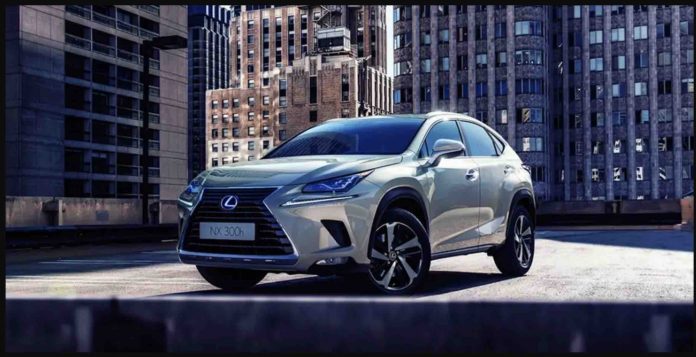

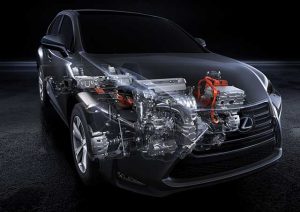

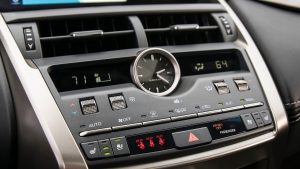








Yeppers, the hybrid markup for Toyota (Lexus) is very reasonable.
$800 for the RAV4, for example, and the hybrid powertrain on that model gets much better reviews than the gasoline-only powertrain.
Nobody cares what you think. Just like nobody cares what Eric thinks. He says he hates the government, but lives off of other people giving him money. What a hypocrite!
You must be some special short bus ridding kind of troll. Unlike the government, Eric does not coerce you into giving him money. He provides car reviews and informed opinions and it’s up to you whether to donate or not.
Clover,
You apparently do not understand what “hypocrite” means. Whatever I earn, I earn by voluntary free exchange. I hate the government because it exists on that which it steals, using force to obtain it. A hypocrite is one who engages in that which he condemns. For your charge to make any sense, I’d have to be on the government dole, or “working” for the government.
Since I don’t, your charge is as much a non sequitur as calling a cat a turtle.
And they ask me why I drink . . .
I’m not against hybrids. They actually make sense in certain conditions.
If it saves you $, great.
Since it’s a Toyota, it will probably last a while.
I hate crossovers. I can’t find a sweeet spot of anything they can do well enough to buy, but they are the new station wagon, so have at it.